
Kibale snare removal program
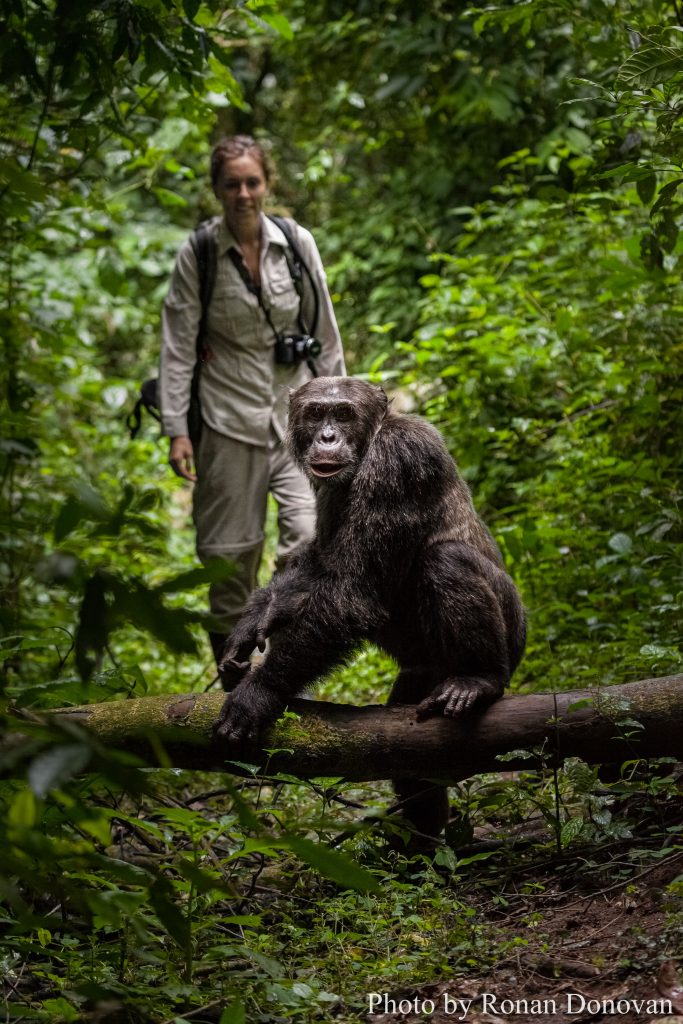
For this feature, we interviewed Dr. Jessica Hartel from the Department of Biology at the University of Georgia and the Director of Conservation for the Kibale Chimpanzee Project (KCP). Located in the Kanyawara region of Kibale National Park in southwestern Uganda, the KCP was established in 1987 by Dr. Richard Wrangham as a long-term field site where researchers study the behavior, ecology, and physiology of wild chimpanzees (Pan troglodytes). As part of efforts to protect chimpanzees and other species that call the park their home, the Kibale Snare Removal Program (KSRP) was established in 1997 in collaboration with the Uganda Wildlife Authority (UWA). The program has three major goals: 1) reduce illegal activity in Kibale to preserve the forest and protect wildlife, 2) involve local communities, and 3) perform educational outreach. While the KSRP was the first snare removal program in Kibale, the Ngogo and Sebitoli Chimpanzee Projects also have snare removal teams. In January 2020, KCP, in collaboration with the Jane Goodall Institute in Uganda and UWA, established the Chimpanzee Health, Intervention, and Monitoring Program (CHIMP), which takes a One Health approach (recognizing the interconnection between people, animals, plants, and their shared environment) and serves as a conservation compliment to the Kibale Snare Removal Program. CHIMP works closely with UWA and multiple projects in Kibale with three major goals in mind: 1) improve chimpanzee health monitoring, 2) elevate veterinary emergency response to snare injuries and disease outbreaks, and 3) engage local communities in public awareness campaigns to help mitigate anthropozoonotic disease transmission. To learn more about these programs, check out our interview with Dr. Hartel and look for her and her colleagues’ chapter in the new 2020 edition of Chimpanzees in Context.
Kanyawara is a well-known research field site that has been around since 1987. How does the establishment and maintenance of long-term field sites help conservation efforts?
Long-term field sites create unique opportunities for on-the-ground conservation promotion, management, and sustainability because researchers stay long enough to build trusted relationships with key stakeholders, partly by providing practical help. Additionally, long-term researchers’ local knowledge makes them well-positioned to address issues of sustainability using appropriate approaches, while also being sensitive to the needs and struggles of people living sympatrically with wildlife. Successful long-term conservation depends on capacity building and buy-in from local people, making it all the more important to integrate conservation biology with social action. Our project therefore uses a holistic approach to conservation by pairing on-the-ground conservation initiatives (i.e., KSRP and CHIMP) with educational outreach in local communities and schools via our sister project, the Kasiisi Project. Together, we have created well-known conservation and education programs that local people have come to respect and in some cases even rely upon – both projects employ dozens of local people, offering competitive salaries with benefits and continuing education opportunities. Over the decades, our programs have grown extensively in their scope and reach due to the support of local people, the Uganda Wildlife Authority, Makerere University Biological Field Station, and many other local projects and NGOs.
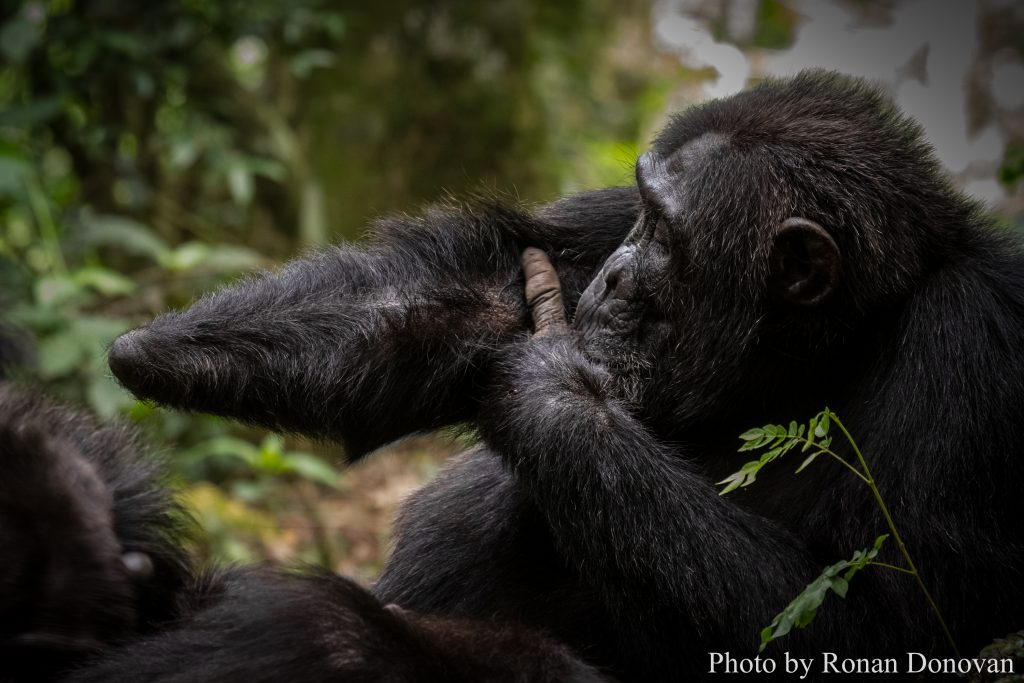
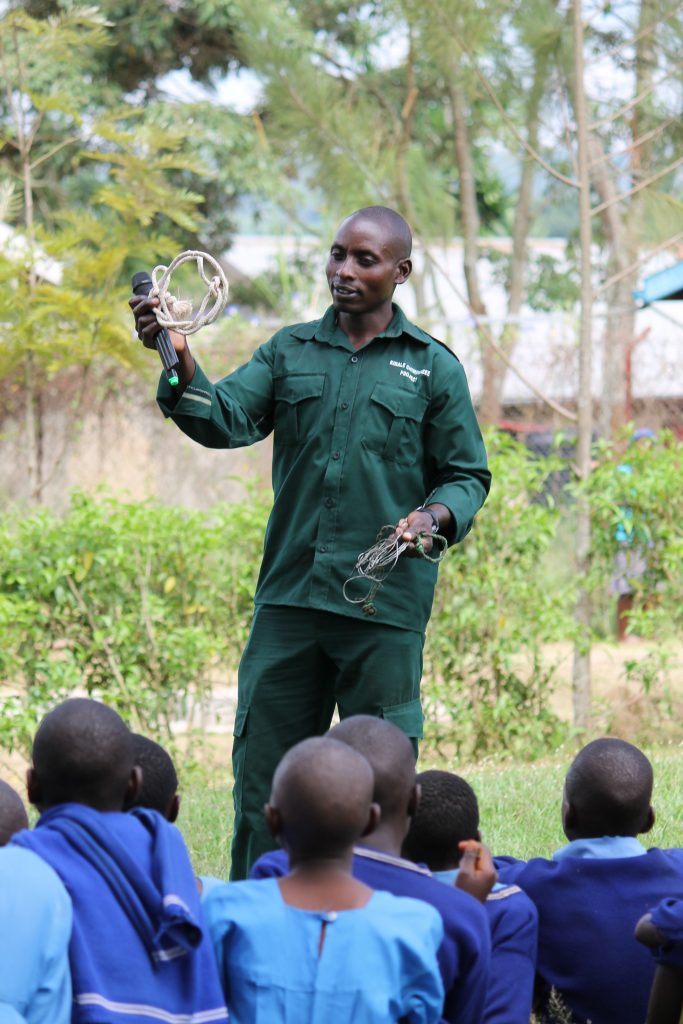
Buy-in from local communities is critical for conservation efforts. Describe the human-animal interface in Kibale. What kind of challenges are faced by humans in the area? What efforts are being made to work with and educate local people?
The human population around Kibale is growing at a rapid rate of 3.5% annually with 50% under the age of 15. By 2050, the surrounding population is predicted to increase five-fold. In addition to a rapid growth rate which constrains land availability, most of the people are living in poverty and rely heavily on their small gardens to provide enough food for their growing families. The cheapest lands are often the areas that border Kibale because these lands are the most at-risk of wildlife crop foraging. Given the limited options, people feel forced to plant gardens at the park’s edge, which in turn further fuels the human-wildlife conflict. The Uganda Wildlife Authority, Kasiisi Project (our sister project), and other conservation projects in the area work extensively with local people to implement and develop effective measures to deter wildlife crop foraging (e.g., digging trenches that cannot be crossed easily, planting nonpalatable crops such as chili or tea, establishing a stinging bee hive boundary for both honey and deterrence, etc.). KSRP teams also work with local communities to educate them on the dangers of eating bushmeat and the penalties involved in poaching. Most recently, our biggest collaborative community events have been in celebration of World Chimpanzee Day and Elephant Pride Day. In the future through CHIMP, we plan to work even more closely with local communities using a One Health approach to not only educate local people about anthropozoonotic disease transmission risk, but also to provide limited veterinary services at cost to local domestic pets and livestock.
Have you documented any changes observed in local attitudes toward chimpanzees and their conservation following the implementation of these efforts?
Through our close partnership with the Kasiisi Project, the educational arm of KCP, surveys have been administered to wildlife club students in local schools before and after KSRP-led conservation talks and activities. These surveys have consistently shown positive attitudinal shifts in the students towards both chimpanzees and Kibale. Community surveys have also been administered and show increased appreciation for the chimps because of revenue sharing, education effort, and employment opportunities. This attitude shift is further illustrated by how the communities refer to the chimpanzees – now saying “our chimps” instead of “your chimps” as they did in the past.
We hope local attitudes towards our conservation efforts, chimpanzees, and Kibale will improve even more with the implementation of CHIMP and our veterinarian’s One Health approach.
What threats are faced by chimpanzees and other primates and wildlife species that live in Kibale? Why are snares such a specific source of concern?
Kibale’s surrounding human population is growing at a rapid rate, which increases the human-chimpanzee (and other wildlife) conflict and tempts: 1) people to enter the park illegally in search of “free” resources, and 2) chimpanzees to range outside of the park to crop forage in gardens bordering the park. As a result, Kibale’s chimpanzees and other nonhuman primates are currently under two major threats that are fueled by the fluid movement of both people and chimpanzees in and out of the park: 1) poaching via snares and 2) anthropozoonotic disease transmission.
Snares are like landmines in the forest – they are cryptic, indiscriminate, and deadly. While not the intended target since Ugandans have a taboo against eating primates, chimpanzees (and other primates) are often accidental victims; their appendages become entangled and over time the snares cut deep into their flesh causing pain, infection, and permanent damage – sometimes resulting in the loss of hands and/or feet. Snares are viewed by poachers as a favorable hunting method because they are cheap to make, easy to set, difficult to detect, and require little monitoring. Poachers have the luxury of checking their snares at their own leisure, which means that many times the entangled animal ends up suffering for long periods of time in the snare before being killed by the poacher or even dying from dehydration, starvation, or infection.
Plumptre et al. (2010) estimated that about one-third of Ugandan chimpanzees have snare injuries. Kibale is no exception to the high snare injury rate with those having been snared typically suffering from permanent injury ranging from missing or paralyzed digits to limb amputations. However, without our and UWA’s conservation efforts to curtail this threat, the snare injury rate would undoubtedly be even higher.
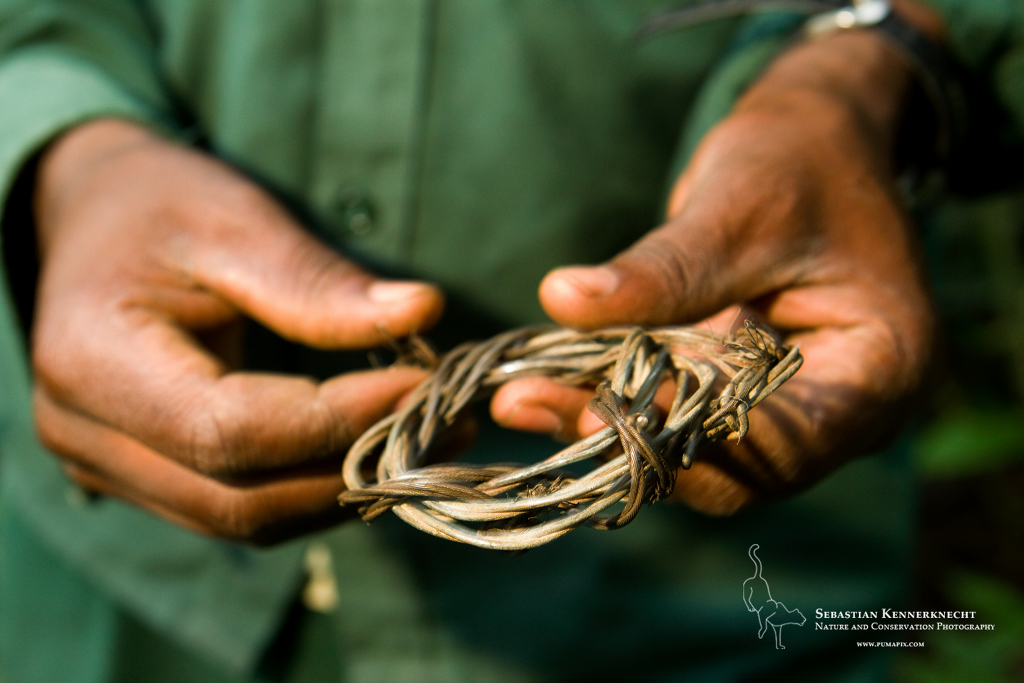
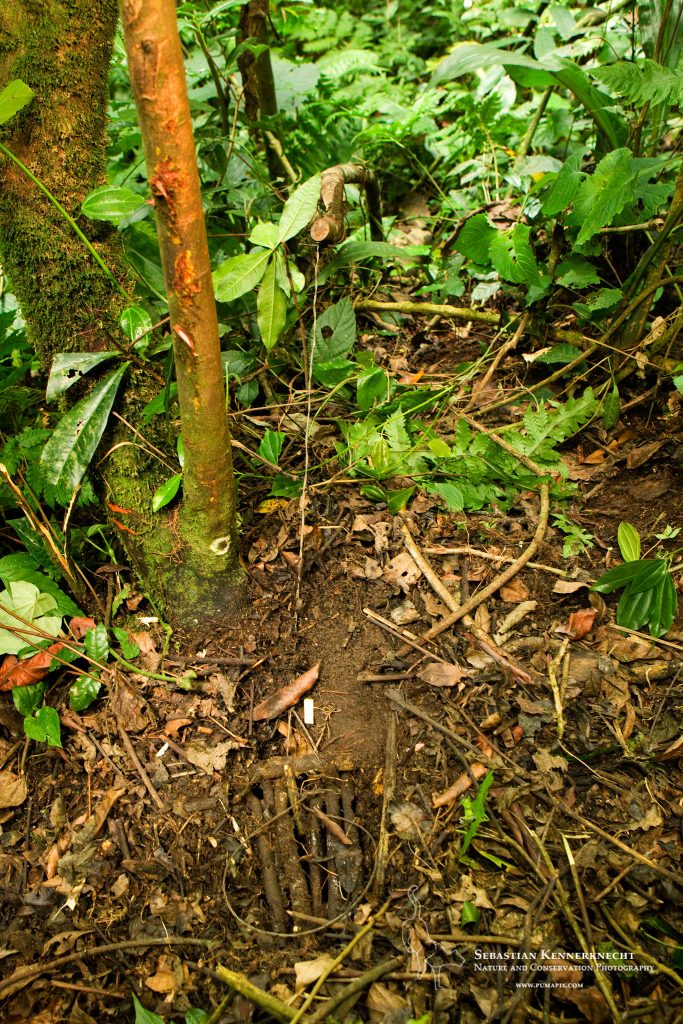
What type of snares are there? What do they look like?
Snares are typically made out of braided wire or nylon and are set to target either the animal’s limb or neck. While wire snares are more common than nylon, they are both equally effective. The wire is very cheap (or sometimes even free); for example poachers can use old clutch brake wires from motorbikes that would otherwise be discarded.
All snares (regardless of type) consists of three main components: loop, slip knot, and tether. However, the placement of the snare varies based on whether it is targeting the animal’s limb or neck. Snares that target the animal’s limbs are the most dangerous to chimpanzees because they have a trigger mechanism for rapid release. When poachers set a limb snare, the snare loop is placed flush on the ground on top of a small hole that the poacher has dug and covered with fragile sticks. The snare tether is then wrapped around a strong sapling or cut pole that can be bent to create tension. Near the slip knot, the poacher constructs a simple trigger mechanism using sticks. When any animal steps inside the snare loop, breaking through the sticks and disturbing the trigger, the tension on the tether will cause the snare to rapidly snap into place entangling the animal’s limb. This immediately frightens the animal and causes it to fight back against the snare, which is still tethered to the tree or pole. The constant pulling against the snare inflicts compounding damage as the noose continues to tighten around the limb, eventually breaking through the skin and embedding in the tissue. While chimpanzees are very strong and are typically able to break the snare’s tether from the tree or pole, most other animals cannot and remain trapped until the poacher returns.
How frequent are snare injuries? How often are these injuries fatal? Have any sex or age differences been found in rate of injury?
The inter-snare interval (ISI) refers to the length of time elapsed between observed chimpanzee snare injuries. At Kanyawara, with an average community size of 50 chimpanzees, the average ISI before the establishment of KSRP in 1997 was 8 months compared to the current average of 13 months after KSRP began. This means that, on average, chimpanzee snarings are now occurring less frequently in large part due to KSRP teams regularly monitoring the Kanyawara home range in collaboration with UWA – removing snares and discouraging poachers from hunting in this area. Only two chimpanzees at Kanyawara are known to have died directly from snare injuries. While we have observed no difference in the snare injury rate between males and females, age does have an effect. Juveniles are the most at-risk age category for being snared. This is likely for two reasons, juveniles are: 1) not yet skilled at spotting snares and 2) starting to explore their independence from mom by running ahead and/or straying from her safe path. Once they are adolescents, their risk of being snared drops dramatically. We have never observed an infant snaring probably because the infant is typically traveling on mom. Based on age and snare rates, we estimate that each Kanyawara chimpanzee (past the age of infancy) has about a 4% risk of being snared each year.
In 2012, juvenile gorillas were observed destroying snares in their habitat by the Dian Fossey Gorilla Fund. It’s thought that they may have learned to do this by observing rangers dismantling the snares. Has anything similar been observed in Kibale?
We have never observed the Kanyawara chimpanzees dismantling snares, and as far as I know, this has also not been observed in other Kibale chimpanzee populations. However, researchers and field assistants at Kanyawara have anecdotally reported that chimpanzees have made soft grunts and alarm called in response to seeing a snare and have also actively avoided the snare by walking around it and demonstrated increased eye gazing and vigilance towards the snare once spotted and while being dismantled by field assistants. But these observations are limited to only a few instances.
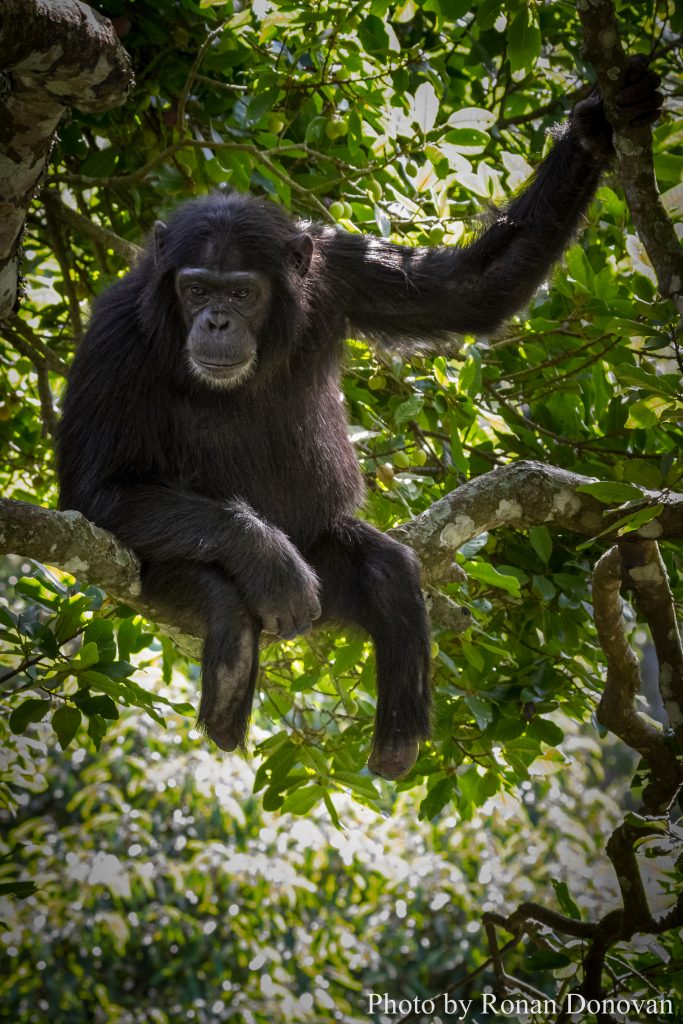
The pictures provided for this feature depict chimpanzees with amputations from snare injuries. Do you actively try to help chimpanzees that are injured by snares? What does that entail? How is a decision made to intervene?
Since 2006, we have been actively performing snare interventions (when possible) for the Kanyawara chimpanzees. However, our intervention frequency (~41% of chimpanzee snaring resulted in intervention) has been heavily curtailed by availability of veterinary support and field conditions. In past years, there have only been a few veterinarians in country that were qualified and allowed to perform chimpanzee snare removal interventions, all of whom were associated with other projects. While these veterinarians (Dr. Peter Apell and the late Dr. David Hyeroba from the Jane Goodall Institute, Dr. Carol Asiimwe and Dr. Timothy Mugabe from Budongo Chimpanzee Project, and Dr. Margaret Driciru from Uganda Wildlife Authority) graciously provided assistance when they could, their availability and location often made it difficult for them to respond in time since interventions are incredibly time sensitive. Even if a veterinarian was able to respond within a few days, field conditions sometimes made it impossible to intervene and/or darting attempts proved unsuccessful.
There are many factors to consider during intervention: age of individual, severity of wound, activity and location of snared individual, party size and composition, etc. The first step of intervention is to decide if and when to dart the snared chimpanzee with anesthesia. This is a joint decision made by the intervention team, which consists of the veterinarian, several field assistants, project management, and UWA. If field conditions are too dangerous, the veterinarian will not dart. If field conditions are favorable, the veterinarian will deploy a dart. However, if the dart does not contact the chimpanzee on the first try, this increases the probability of a failed intervention as the target chimpanzee quickly becomes hyperaware and mothers may “hide” their snared juvenile from the veterinarian. Following a successful darting event, the intervention team works as quickly as possible to remove the snare, clean the wound, administer antibiotics, and collect relevant data before administering the reversal drug to wake the chimpanzee. The intervention team then follows the chimpanzee until nesting and continues to monitor the chimpanzee for the next 2-5 days, depending on the severity of injury and rate of recovery.
As of this year, we hope to see our intervention frequency increase due to the establishment of CHIMP, which includes the full-time employment of an on-site veterinarian who can respond in real-time. We also offer intervention services to the other long-term projects in Kibale and therefore hope to increase their intervention frequency when field conditions warrant it.
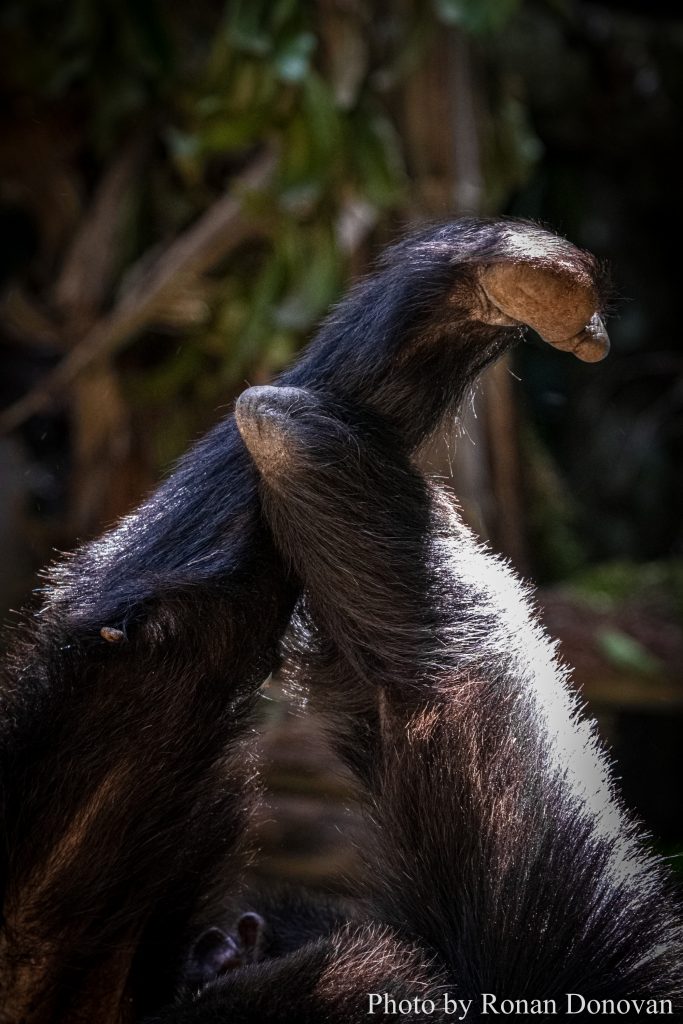
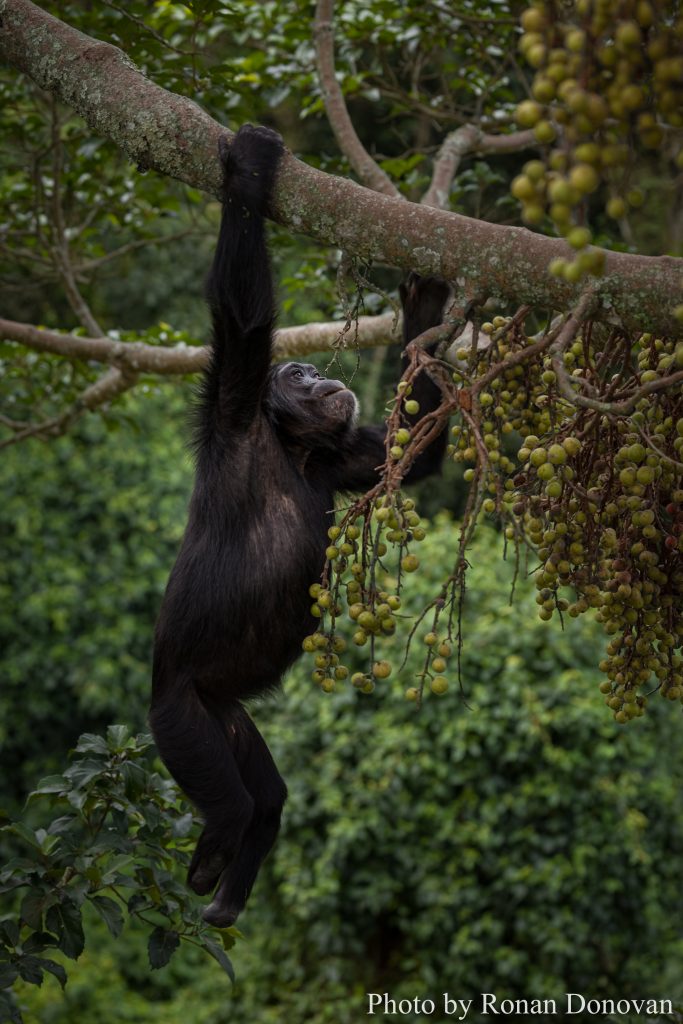
What are some of the debates surrounding whether to intervene? Does intervening to treat chimpanzees injured by snares compromise research?
Given the extensive anthropogenic pressures that chimpanzees and other wildlife are facing on a daily basis, interventions to remedy human-induced actions that threaten species longevity and survival are now seen as morally imperative, and as a result are increasingly common and are much less debated than they were previously. Most long-term chimpanzee field sites have intervention plans for these types of human-inflicted situations. Now, instead of focusing more broadly on the ethical question of should or shouldn’t we intervene, the intervention debate has shifted to be much more narrowly focused on each case where intervention may be needed. On a case-by-case basis, the question (or debate) is: Does the potential benefit of intervention for Individual X outweigh the potential dangers or cost? It can be very difficult for intervention teams to reach consensus on this question, and often may involve many competing objective and subjective viewpoints. For example, if a chimpanzee were snared today, the debate about whether or not we should intervene would include a new discussion about the potential risk of COVID-19 disease transmission. Not only is this a potential cost to the snared individual, but it is a cost that could adversely impact the entire population. This potential new threat could mean that the risks of intervention grossly outweigh the benefits.
To date, we have not observed any adverse effects of successful intervention on research or habituation. What this means is if a chimpanzee is darted and the snare removed, the recovering chimpanzee does not demonstrate any behavioral changes in response to the intervention team and/or humans that regularly follow them. Since snare injuries are human-induced (and not a natural selective pressure), it could be argued that not intervening would have a greater impact on research because when left alone, snares sometimes inflict permanent damage thereby forever altering a chimpanzee’s physicality, behavior, social status, and more.
Do any other species have issues with the snares? Is any direct assistance provided to species other than chimpanzees?
Theoretically, most terrestrial mammals in Kibale are vulnerable to snares – even humans; I have even stepped on a snare! However, the most common victims of snares tend to be mammals, particularly ungulates (hooved mammals such as duikers, bushbucks, bushpigs, buffalo, etc.), which are the poacher’s intended targets. We have observed almost all of Kibale’s primate species caught in snares, as well as golden cats and elephants. We have found huge snares made out of electric and phone cable intended specifically for elephants, but elephant trunks are vulnerable to the smaller snares as their trunks get entangled when probing.
In past years when conditions were safe, our snare removal teams rescued several primate and smaller ungulate species from snares by carefully pinning the animal with sticks and then using wire cutters to quickly remove the snare. However, once the animal is released, we have zero information about recovery or survival. Now that we have an on-site veterinarian, we have been able to expand our emergency response to include any snared species within or around the park. If field conditions are safe, the veterinarian will anesthetize the snared animal, remove the snare, treat the wound, and administer antibiotics. This will give the treated animal a much better chance of recovery and survival.

How many snares have been removed by the Kibale Snare Removal Program?
While there can be great variability in snare detection and removal (e.g., seasonal effects, level of experience, etc.), on average KSRP removes 46 snares per month resulting in the removal of over 10,000 snares since 1997. In recent years, we have ramped up our removal efforts by hiring more snare removal assistants to build multiple independently operating teams. In 1997, we started with only two snare removal assistants operating as one team. By 2019, we had grown to nine snare removal assistants operating as three independent teams. With this increased manpower, we have doubled and at times even tripled our historical snare detection and removal rates.
Aside from snare removal, in what other ways has the program been successful?
KSRP has been extremely successful in building collaborative relationships with the Uganda Wildlife Authority and other long-term projects and NGOs in the area. One example of this is our long-term partnership with the Kasiisi Project. Since 1997, our projects have been working collaboratively to integrate on-the-ground conservation efforts with educational outreach. The Kasiisi Project works in 16 government primary schools (reaching over 8,000 children) located within 5 km of Kibale’s northern and western boundary. We regularly work with the Kasiisi Project and their wildlife clubs to develop and implement KSRP-led conservation talks and activities, including but not limited to games, radio shows, documentary showings, debates, World Chimpanzee Day celebrations, etc. As a result of these conservation-based educational outreach initiatives, we have observed positive attitudinal shifts in children towards chimpanzees (and other wildlife) and their conservation.
The success of KSRP helped spawn the creation and implementation of CHIMP. This is largely because UWA and our funders (Jane Goodall Institutes in Austria, Netherlands, Switzerland, and Uganda) were very happy with KSRP’s progress over the years and therefore were supportive of expanding our conservation efforts in and around Kibale to better meet the needs. In this case, KSRP serves as a preventative conservation measure by reducing the risk of chimpanzees and other wildlife being snared. However, it is impossible to remove this threat entirely; therefore, CHIMP serves as a treatment conservation measure by reducing the chimpanzees’ likelihood of permanent injury or death due to both snares and anthropozoonotic disease transmission.
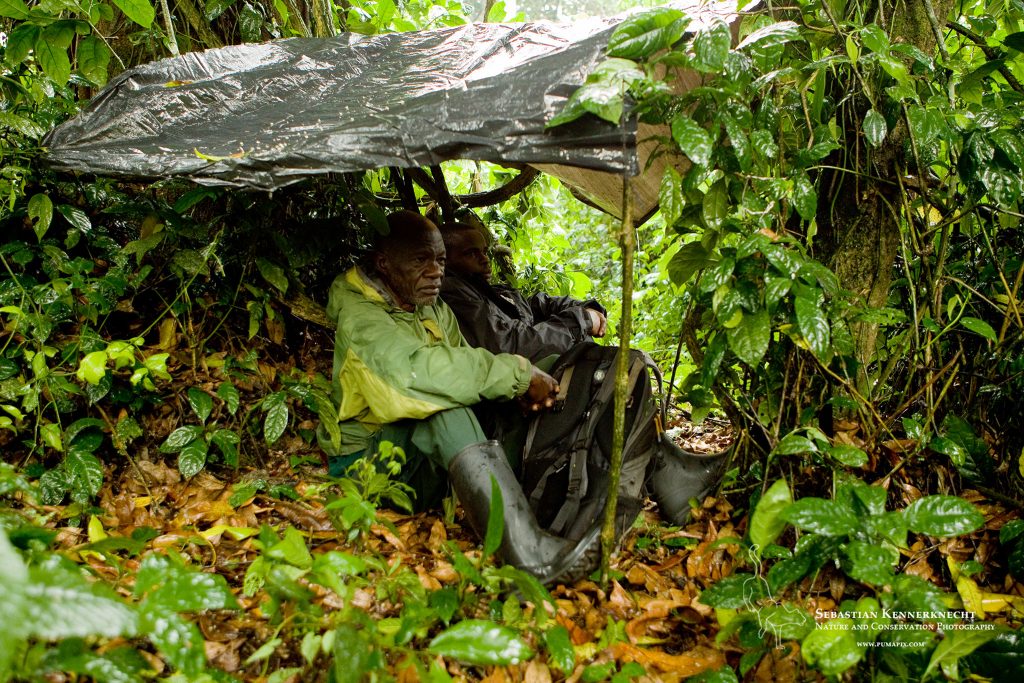
For more information about KSRP, check out the two videos linked below.
Mini-documentary: https://youtu.be/Rn3iLas18IY
Video by the Jane Goodall Institute: https://www.youtube.com/watch?v=VEd-2IddiCo&t=10s
To make a donation to KSRP conservation efforts, visit the following link and include ‘KSRP donation’ in the notes to earmark the donation for KSRP specifically: https://kibalechimpanzees.wordpress.com/donate/